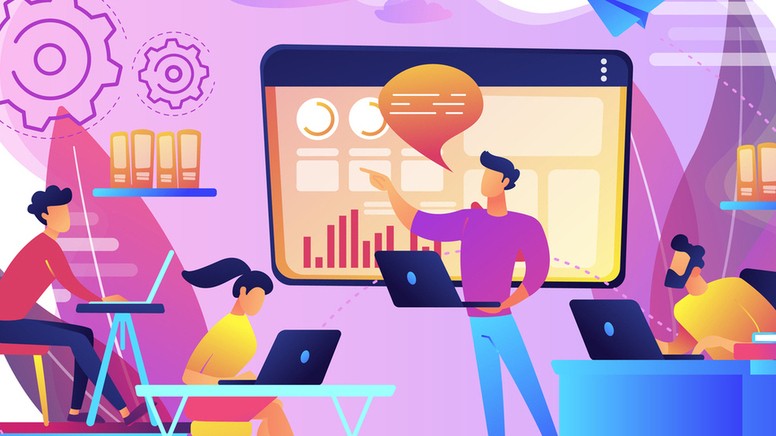Across India, thousands of young people from underprivileged backgrounds are enrolling in short-term skill-building programs. Many are funded by CSR budgets; others are run by NGOs determined to bridge the employability gap.
The intent is noble. The work is important. But here’s the uncomfortable truth: while these programs create pockets of success, most still struggle to prove impact at scale. Over the years, in conversations with CSR leaders, NGO directors, and on-ground trainers, I’ve noticed the same challenge come up again and again.
They all ask: “We’re putting in the effort—but how do we measure and prove outcomes in a credible way?”
The Reporting Struggle No One Talks About
Most CSR or NGO skill programs rely on:
- Paper registers for attendance
- Trainer notes for progress
- Excel sheets stitched together at the end of a program
It works when you’re running one classroom in one town. But try scaling that across 500 learners in 10 districts—and the cracks start to show.
- Learners disengage after the first few sessions.
- Trainers rotate, creating gaps in delivery quality.
- Funders get activity reports (“200 learners trained”) but no proof of impact (“how many are job-ready?”).
And the energy that should go into coaching learners often gets spent pulling together fragmented data for board reports. If this sounds familiar, you’re not alone. It’s the default state for most NGOs and CSR teams today.
The Shift: From Effort to Evidence
The good news is that this problem is solvable. The organizations that are breaking through have one thing in common: they’ve shifted from manual, end-of-program reporting to digital-first, live tracking systems.
Here’s why it matters:
- Consistency of Training Delivery
A digital platform ensures every learner, whether in Bengaluru or Barmer, gets the same modules, assessments, and updated resources. No more “quality depends on the trainer.” - Real-Time Progress Tracking
Instead of waiting for end-of-course surveys, program managers can see weekly data: who’s logging in, who’s dropping off, who needs intervention. Trainers can act before a learner quits. - Instant, Transparent Reporting
CSR leaders no longer spend weeks compiling numbers. Dashboards show completion rates, certifications issued, even placement outcomes—data that can go directly to auditors and boards. - Learner Engagement at Scale
Offline-enabled mobile apps and content in regional languages keep learners engaged even in low-connectivity areas. This is crucial if your beneficiaries are in rural or semi-urban geographies.

CSR/NGO Impact Reporting Starter Kit
Templates for cohort tracking, funder-ready dashboards, and a pilot plan for 50 learners.
Start Small, Scale Fast
I’ve seen NGOs make the mistake of thinking they need to digitize everything at once. That’s overwhelming and often leads to stalled projects. The smarter approach? Start small.
- Pick one program, digitize it, and pilot it for 50 learners.
- Track the completion and engagement data.
- Present that evidence to funders as “proof of concept.”
Once stakeholders see the difference between activity reporting and impact reporting, scaling across the portfolio becomes much easier.
The Content Factor No One Should Ignore
Technology alone won’t solve this. Even the best LMS will fall flat if the content doesn’t resonate.
In our work with NGOs and corporates, we’ve learned that effective digital content must be:
- Contextual: examples learners relate to in their daily lives
- Localized: translated into regional languages, not just subtitled
- Bite-Sized: 5–10 minute lessons that fit into a learner’s day
- Practical: built around scenarios and role-plays, not just theory
When learners see themselves in the training, engagement skyrockets.
The CSR Leader’s Advantage
For CSR leaders, this shift is more than just technology adoption. It’s a chance to:
- Show boards and regulators that every rupee is traceable to outcomes.
- Build credibility with evidence-backed reporting.
- Secure larger budgets for future programs by proving success with data.
And for NGOs, it reduces administrative overload, allowing them to focus on what they do best: community engagement and learner support.
The Next 5 Years
India’s skilling landscape is at an inflection point. Programs that continue with manual tracking will remain in “impact in isolation.” Programs that embrace digital systems will move into “impact at scale.”
That means:
- Training 1,000 learners across 10 states with the same oversight you once had for 100.
- Moving from “we think this worked” to “here’s the evidence it did.”
- Shifting from compliance-driven reporting to strategy-driven decision making.
As founders, we often get caught up in talking about technology. But what excites me most is not the software—it’s what it enables: confidence, credibility, and scale.
For NGOs and CSR teams, adopting digital learning isn’t about chasing the latest trend. It’s about ensuring that every learner gets a fair chance, every trainer has the tools they need, and every rupee invested turns into visible, measurable change.
And that, to me, is impact worth scaling.
Download: CSR/NGO Impact Reporting Starter Kit
Get dashboards + templates to move from activity to outcomes.
 How to Scale Learning and Tech Teams Without Breaking the Budget
How to Scale Learning and Tech Teams Without Breaking the Budget
 Why eLearning Content Development is the Future of Education in India
Why eLearning Content Development is the Future of Education in India
 Gamify Education: Revolutionizing Learning Experiences with 4Edge IT Solutions
Gamify Education: Revolutionizing Learning Experiences with 4Edge IT Solutions